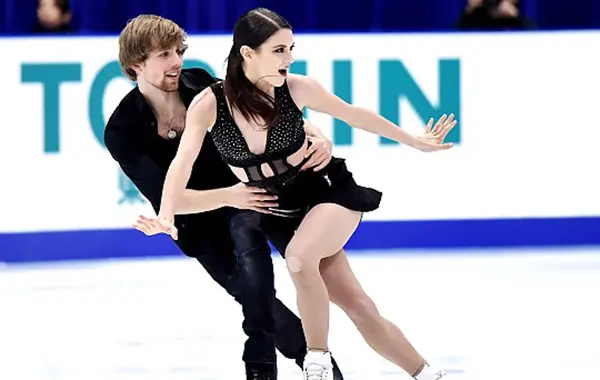Let it be clear: blues in competitive figure skating can in no way truly be equated to blues the form of social dance. Even the most musically nuanced ice dancers are dancing in blades on an ice surface; they are obligated to incorporate a number of required technical elements, including lifts and separated sections very unlikely to be found in your most standard blues dance; and they are, most detrimentally, held to quite strict requirements musically and rhythmically. The slow, pulsing music suitable to a social floor will not pass muster in this skating season, where teams must perform their three-minute short dance to “blues” music with a BPM of 88 — and worse still, pair it with one of two other styles, swing (a broad enough category, by the skating rulebook, to include even disco — a story for another issue) or hip hop.
Many teams this year, however, have opted not for vintage blues, but blues of the future — pairing it with one of the present era’s most fundamental street styles, hip hop, for a modern take, an experiment that can present mixed results between the difficulties of blending two seemingly disparate musical styles and representing a staccato, stationary style on ice.
The trick, musically, is to find the shared root. If hip hop and rap arise from the soul and funk of the ‘60s and ‘70s, so too was that style simply a popular offshoot of more traditional blues and jazz. U.S. dancers Kaitlin Hawayek and Jean-Luc Baker have laid this heritage bare with a program that fluidly melds Michael Buble’s rendition of Nina Simone classic “Feeling Good” with Flo Rida’s rap remix “How I Feel,” which samples and builds on Simone’s number while fitting within the pitch of Buble’s …..read more here


